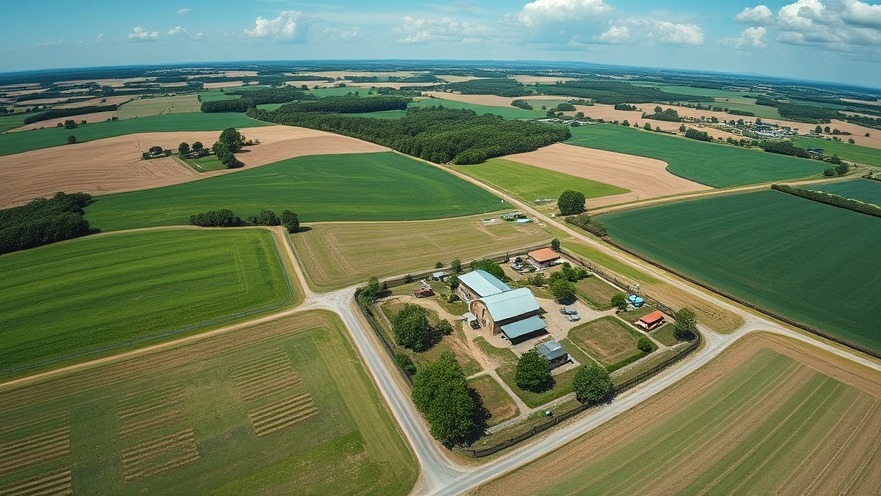
The Impending Medicaid Cuts: A Tipping Point for Rural Health
As Americans navigate the complexities of health policy amidst a changing legislative landscape, a significant concern has emerged related to the recently proposed Medicaid cuts tied to the House's budget reconciliation bill, known as the One Big Beautiful Bill Act. With approximately 66 million people, or 20% of the U.S. population, residing in rural areas, any substantial changes to Medicaid funding directly impact health and wellness services in these communities.
Rural Health at Risk: How Medicaid Serves the Underserved
Medicaid plays a critical role in rural healthcare, covering nearly one in four adults in these areas. This coverage is essential, not just for low-income families, but also for sustaining healthcare facilities that rely on federal funding to operate. In fact, Medicaid finances nearly half of all births in rural communities and accounts for one-fifth of inpatient hospital discharges. As such, the impending cuts—estimated by the Congressional Budget Office to reach up to $793 billion—underscore a precarious future for many healthcare providers already strained by economic pressures.
A Glimpse at the Financial Toll: Dollars and Sense
The proposed amendments could witness a dramatic decrease in Medicaid enrollment—by over 10 million individuals—and potentially double the number of uninsured Americans by 7.8 million. Such alarming statistics not only reflect a personal health crisis for many but also highlight the financial instability that rural health facilities face. Healthcare systems could see a 15% decrease in federal Medicaid spending over the next ten years, translating to about $119 billion less available for essential services.
Policy Responses: Can Rural Communities Engage the Government?
In response to mounting concerns, Senate Republicans proposed establishing a $15 billion rural health fund aimed at providing an annual allocation of $3 billion from 2027 to 2031. However, the effectiveness of this fund remains a debated topic. Will it be sufficient to mitigate the losses incurred by local providers? The allocation strategies—half of which are set to be distributed equally among states and the other half contingent upon rural demographics—may fall short, especially given the pressing need for more substantial investment in healthcare infrastructure.
The Ripple Effect of Uncompensated Care
As rural providers brace for financial strain, increases in uncompensated care could lead to layoffs and diminished services. The expected cuts, alongside changes to the Affordable Care Act (ACA), could leave millions vulnerable. Notably, the anticipated loss of about 8.2 million individuals from health insurance rolls reflects broader trends, including $268 billion in ACA cuts and altered subsidy structures that were essential during the COVID-19 pandemic. This perfect storm of policy changes signals a critical moment for health advocates in rural areas, compounding existing challenges to care accessibility.
A Call for Community Action: How Individuals Can Make a Difference
While the legislative framework may be shifting, individuals can harness their voices to advocate for rural health needs. By engaging in local discussions, joining advocacy groups, and educating themselves about forthcoming policy changes, suburban professionals can play a pivotal role in influencing healthcare strategies that prioritize wellness and sustainability in rural communities.
Conclusion: The Future of Rural Health is in Our Hands
The interplay between health policy and community welfare is more relevant than ever. As cuts loom, understanding the implications for rural healthcare—encompassing everything from prenatal care to emergency services—is crucial for preserving the health of millions and fostering robust health and wellness strategies. Let's continue to advocate for comprehensive healthcare that prioritizes all communities—urban and rural alike.
 Add Row
Add Row  Add
Add 




Write A Comment